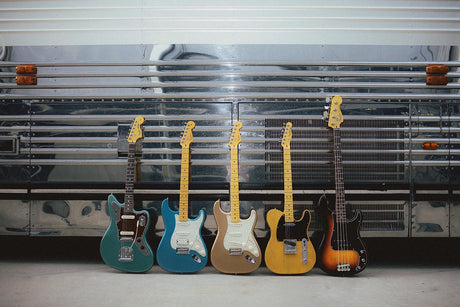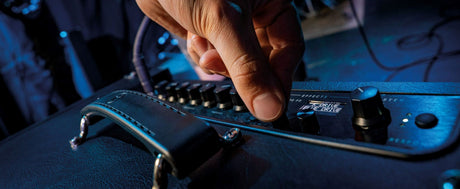All the pianos within the Yamaha CLP and CVP series are Clavinovas, so what justifies the price difference between the entry level Clavinova, the CLP625 and the pianos at the top of the range, the CVP709 and CVP709GP, and what are the differences between the CLP and CVP series in general? Well, it’s mostly a mixture of; features, keyboard action (how it feels to play), sound, and speakers. This article will go through the various differences between the Yamaha CLP range and CVP range, as well as look at what you get when you upgrade within either. Just know that whichever Clavinova you go for, you’re in for a treat!
What are the differences between the Yamaha CLP and CVP Clavinovas?
To make a general statement, the main difference between the Yamaha CLPs and CVPs is features. The CVP Clavinovas have a lot more features on them that allow the user to be incredibly creative and to get a massive range of different sounds out of one instrument. The CLP range on the other hand is all about providing players with an authentic piano playing experience; that is, to get the instruments feeling and sounding as close to an acoustic as possible. That’s not to say that the CVPs don’t – for example, the first in the CVP range, the CVP701 has the same keyboard action and same main piano sounds as the Yamaha CLP625 and 635, but what else does it have to justify the price difference?
Sounds & Voices
First off, the CVPs have a lot more sounds than the CLPs. The CVP701 has 777 different voices and 29 different drum sounds so if you want to able to command a wide range of instruments then the CVP range could be for you. Whilst there are a few different sounds available on the CLPs (the 625 has 36 voices), the focus is more on the piano. 49 of these voices on the CVP701 are what Yamaha call Super Articulation voices. These include all the human nuances that help make the voices sound more realistic e.g. with wind instruments you’ll hear the inhale and exhale of the virtual player like you would with a real one! These performance attributes help make the Super Articulation voices sound like they’re coming from human beings, not from a piano. As well as a multitude of sounds, you’ve also got hundreds of options when it comes to effects too, including a 27 part equaliser to help get the exact sound you’re looking for.
Backing & Accompaniments
It’s not just that the CVPs have more sounds then the CLPs. You can also call upon virtual players to jam with you in 40 different musical styles. These follow the dynamics and harmony of your playing, which you can then record to create fully fledged songs within minutes. You can also control a range of Accompaniment Styles, from small jazz ensembles to full orchestras so whatever style of music you play, you can oversee every part of it with one the Yamaha CVP Clavinovas.
Other Features
The CVP range also features a microphone input – particularly helpful for singer songwriters. With this you can record both your piano playing and your vocals at the same time without the need for awkward recording software. The CVP705 and 709 even have a vocal harmoniser on board! These pianos also have great learning facilities such as follow lights that help beginners play the right keys in the right order; if you don’t get it right first time, the instrument will wait until you do! If you want an instrument with interactive learning facilities to help a players progress then a CVP could be the one you’re after. All Yamaha CVP pianos come a full colour LCD screen too to make interacting with your instrument easy.
Improvements In Piano Sound And Action Within New CLP600 Series
The new CLP600 range has had a number of upgrades to make sitting at one more like sitting at an acoustic grand. All the instruments in the range have what they call binaural sampling – this isn’t on the CVPs and, in a nutshell, improves the sound when you use headphones. When you’re on the CFX setting with headphones, it’s as if the sound is coming from in front of you, not directly into your ears – you have to try it! Also, whilst the CVPs do have Virtual Resonance Modelling (the digital recreation of all the mechanical sounds you would hear playing an acoustic), it’s more advanced on the CLPs. This means the CLP600 Clavinovas, on a grand piano setting sound a little richer and closer to an acoustic piano. The new GrandTouch piano action on the CLP675 and 685 is also the best and most authentic one that Yamaha have ever created.
What Do I get When I Upgrade Within the Yamaha CLP Range?
All of the CLP600s have on board, the sound of two of the world’s finest concert grand pianos – the Yamaha CFX and Bosendorfer Imperial, meaning that you get the option of two world class piano sounds. The CLP685 also gives you the sound of the Yamaha C7 Studio grand piano – this is one of the most popular instruments amongst a whole host of professional players including Jamie Cullum and Alicia Keys. From the CLP635 upwards, the piano will digitally recreate all the mechanical sounds that an acoustic makes (Yamaha call it VRM) – string and damper resonance etc – this helps give you a more authentic piano playing experience whilst enjoying the benefits of a digital instrument.
From the CLP645 upwards, you also get bluetooth functionality – with this you can connect your phone or tablet to your piano and stream music through your instrument’s speakers – this great for those learning the ABRSM grade pieces as you can use their app to practice each hand individually. Of course it also works as an amazing sound system through which you can listen to your music library! Each model upgrade sees better speaker too; these don’t just give you increased volume but also more clarity at lower volumes. For more details on which features are on which models, simply click on to the product pages below.
What Do I get When I Upgrade Within the Yamaha CVP Range?
Conclusion
However, if you want to get creative with an enormous array of different sounds, as well as having the option of simply playing the piano, then the CVPs are definitely worth a look. The Super Articulation voices are a superb example of how much technology has come on in recent years and the recording and learning facilities render it ideal for a variety of different players. Both the CLPs and CVPs are superb instruments, and it’s little wonder why the Yamaha Clavinova series is now more popular than ever.









